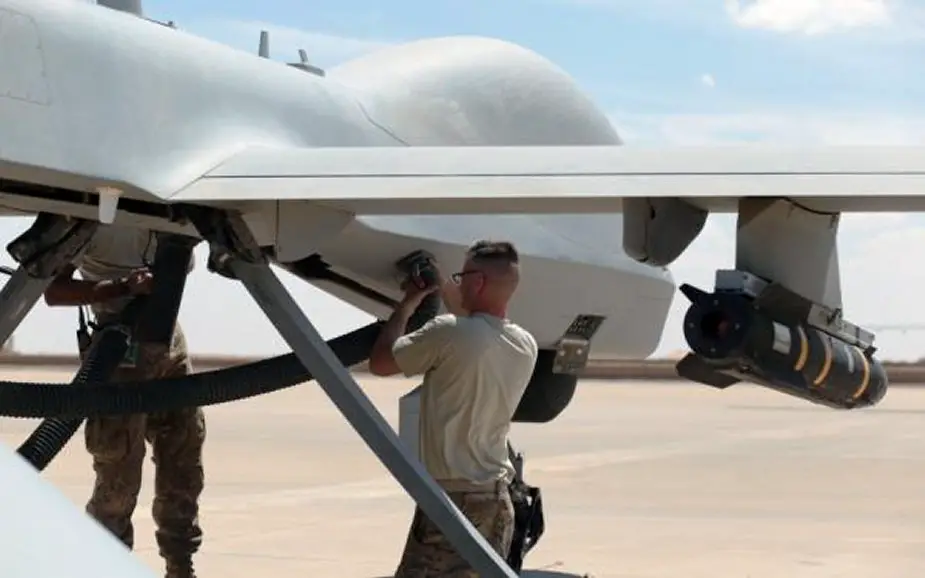The U.S. Army needs a family of lightweight, longer-range precision munitions to fire from its fleet of unmanned aerial systems and attack helicopters, said Maj. Gen. Frank Tate, director of Army Aviation, G-3/5/7, during the 2018 Army Aviation Mission Solutions Summit in Nashville.

UAS like the MQ-1C Gray Eagle should carry more and lighter missiles than the heavy AGM-114 Hellfire. Illustrated here: Company B, 229 UAS supports OIR (Photo: Capt. Briana McFarland, 449th Theater Aviation Brigade)
First, as David Vergun reports, near-peer potential adversary threats posed by advanced integrated air and missile defense allow longer-range standoff distances against U.S. maneuver forces, he said. Thus, the Army has a need for longer range precision munitions. Second, there is an urgent need for lighter-weight long-range precision munitions, he said.
Right now, for instance, an MQ-1C Gray Eagle UAS might loiter in the sky for more than a day, with several AGM-114 Hellfire, air-to-surface missiles on board, Tate said. Having detected a bad actor on a motorcycle or a group of terrorists warming around a campfire, the system could deploy one of its missiles.
A less expensive round that is also much lighter in weight, could take out those types of targets as well, he said. An AGM-114 Hellfire weighs over 100 pounds, so several times more lightweight rounds could be added to the rails of the UAS or AH-64 Apache helicopter.
Multiple vendors are currently competing on getting the Army the biggest bang for its buck on a number of these lightweight rounds, he said, noting that competition is good.














